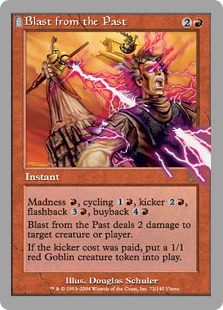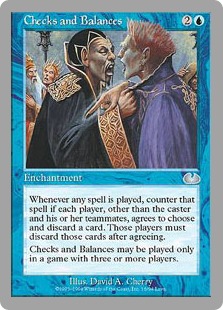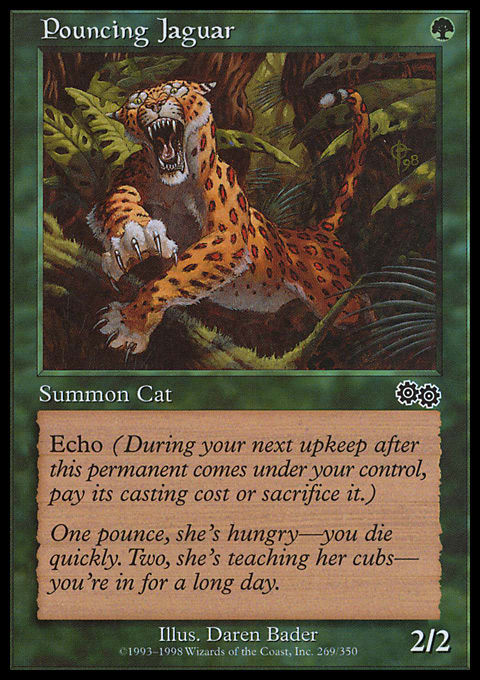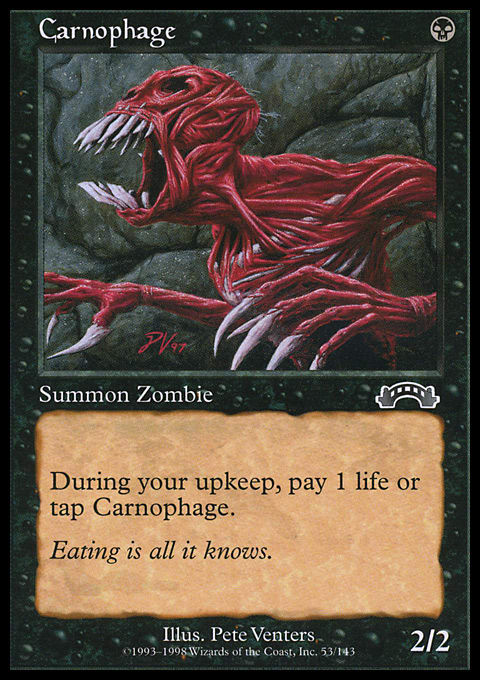I was going to write about Avacyn Restored, but after reading dozens of reviews for Constructed, Limited, and Commander, I don’t think there’s too much I need to say. I’ve been writing almost exclusively about Commander so far, so I thought I’d switch gears and talk about another of my favorite formats: Cube Draft.
I have a fairly standard three-hundred-sixty-plus-card Cube, and I have done a ton of research on how to develop and balance it. Almost everything I’ve read, though, seems to assume that you’re consistently running eight-mans with a bunch of experienced drafters. That hasn’t been my experience at all.
Cube is among my favorite formats to play with people who like Magic but don’t collect, people who are just getting into the game, and people who haven’t played in years. I play Sealed with friends in coffee shops, draft with new players down at the local card shop, and Winston with roommates after dinner. I think running a public Cube can be a great way to be an ambassador to the game.
But how do you design a Cube to be accessible without messing with the complexity that makes it so great in the first place? Here are some things I’ve learned over the past few years.
Readability

What’s the fourth ability again?Does it target you when it taps all your creatures?
This one is fairly simple: Make sure every card says what it does.
My Cube includes no foreign or textless cards. I try to find recent printings that include relevant errata. For example, I use the Commander Mother of Runes and Yavimaya Elder because they actually say “Human” . . . so no one tries to block Stromkirk Noble. I’m still trying to track down a Beatdown Impulse so it doesn’t have the erroneous “shuffle your library” text.
Mechanics

Good luck explaining this one to someonewho’s still learning, “Untap, upkeep, draw.”
If someone who hadn’t played since Ice Age wanted to draft your Cube, how many mechanics would you have to explain? (Don’t forget planeswalkers and Equipment.) What about someone who had only played since Zendikar?
There are plenty of mechanics that are fairly simple and easily explain themselves on card text. I wouldn’t worry about cycling, kicker, or battle cry. But there are other mechanics have extreme changes to gameplay and how we handle the actual cards. I don’t think one should avoid these mechanics entirely, but you should consider whether you’re running enough of them in your Cube to be worth the effort of explaining/understanding them. Morph is a sweet mechanic, but I wouldn’t want a Cube with only two morph creatures in it.
Here are mechanics that are complicated or unusual enough that you probably wouldn’t want to include without conscious support:
- Morph
- Transform (double-faced cards)
- Split cards
- Level up
- Soulbond
- Miracle
- Infect
- Hybrid mana
- Phyrexian mana
- Planeswalkers
Professional Magic designers and developers have been using the term “complexity points” a lot of late. The idea isn’t some sort of actual measure, but to convey the idea that you can only have so much complexity in the format, and you need to allocate it appropriately. I think this idea can be applied to Cube.
Cubes spend a lot more complexity points than the average expansion. You have dozens of keywords, block mechanics, and multiple rares and mythics per pack. While something like soulbond or infect can be conveyed to new players when it is a key theme of a major release, it’s not necessarily worth it for two cards out of three hundred sixty (or more).
On Aggro Support
 |
||
|
Introducing picks thirteen, fourteen, and fifteen. |
||
Proper support for aggressive decks is a keystone of Cube theory. It takes a lot more work to make aggro decks viable than it does control or midrange. Aggro decks require ten or more 1- to 2-mana creatures, whereas control only needs one or two big finishers. This means that you need a solid lower mana curve in each of your aggressive colors, including some unexciting but cheap dudes such as Vampire Interloper and Jungle Lion.
This is great if you play with a lot of regular cubers who know how to properly draft aggro, but these cards are absolutely terrible in any deck that’s already grabbed some sweet Titans and planeswalkers. I can’t remember the last time I saw anyone other than me play Wild Dogs.
Additionally, I play a certain amount of Sealed and multiplayer where those cards are effectively blank. I can understand the value of supporting hyper-aggressive strategies, but I’m sick of spending so many card slots on things people don’t really want to play. I remember one evening when two friends and I decided to play multiplayer Sealed. A short way into the first game, we discovered that all three of us were playing some variant of Esper control. Too many red and green cards were completely unplayable, and even the more multiplayer-friendly colors were too shallow to build two-color decks.
You don’t want to make aggro unviable, especially in one-on-one matches. I don’t think I’ll be cutting Jackal Pup any time soon. But I’ve replaced some narrow cards that are only playable in the most aggressive decks with more well-rounded creatures that can support aggro without limiting themselves to it. For example, Jade Mage is a fine 2/1 for a G/W beatdown deck, but it is also playable in midrange and multiplayer as a long-game token generator.
Synergy and Expectations
When I first-pick a powerful but narrow card, I should be able to draft cards that support that strategy. There’s nothing worse than picking up a Survival of the Fittest, Reveillark, or Venser, the Sojourner and then finding the Cube doesn’t have anything particularly useful to do with it.
Make sure you support the expectations of your players by keeping an eye toward synergy when you make card choices. One of my favorite ways to encourage interesting drafting is narrow tutor cards: Stoneforge Mystic, Trinket Mage, and Ranger of Eos can all drastically alter card evaluations.
I always try to emphasize synergy and interaction over pure abstract power. For example, when I needed to cut one of my black 1-drops, I cut Vampire Lacerator over Carnophage. Lacerator is the stronger card, but I’d rather support interactions with tribal Zombie cards such as Sarcomancy, Gravecrawler, and Graveborn Muse. Similarly, Bone Shredder got the nod over Nekrataal largely because it can be targeted by Sun Titan.
Multiplayer Considerations

Not running this any time soon.
I play enough multiplayer with my Cube that it’s worth taking into account when making card choices. I don’t want any cards that are only useful in multiplayer such as Syphon Mind, but I’ll happily run Innocent Blood or Fleshbag Marauder over similar effects for their added multiplayer functionality. I’m not quite at the point of adding Rhystic Study or Death by Dragons, but I may get there eventually.
Fortunately, there are plenty of cubable cards that are already great in multiplayer. Mimic Vat, Time Warp, Catastrophe, and Profane Command are all cards that are very playable in one-on-one but become especially awesome in multiplayer.
Moving Forward
I have half a dozen articles in the works at any given time, but I’m curious to hear what you guys are interested in reading about. Should I be sticking mostly to Commander or exploring other formats? Broad theory or more specific deck building and strategy? Let me know in the comments!


























